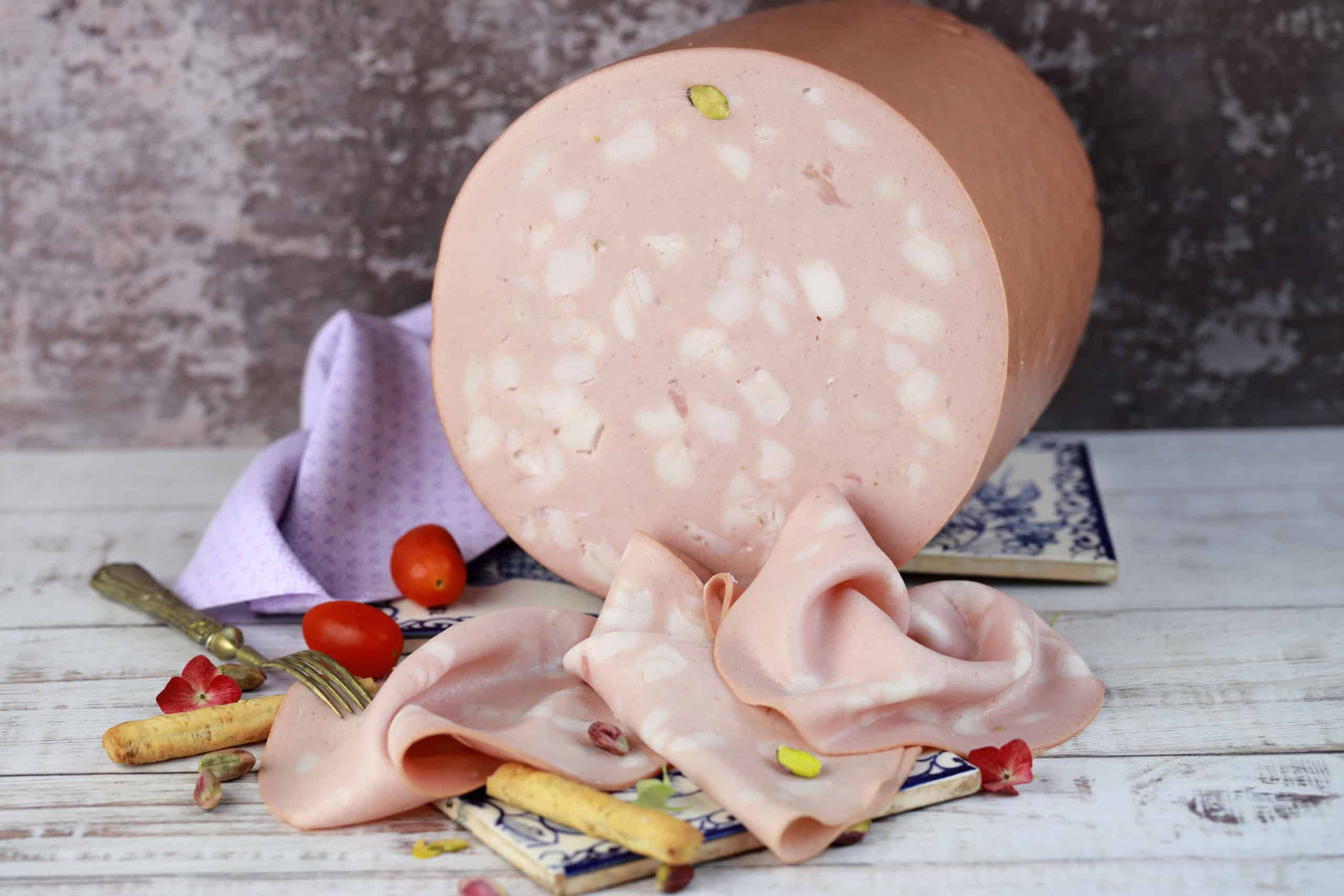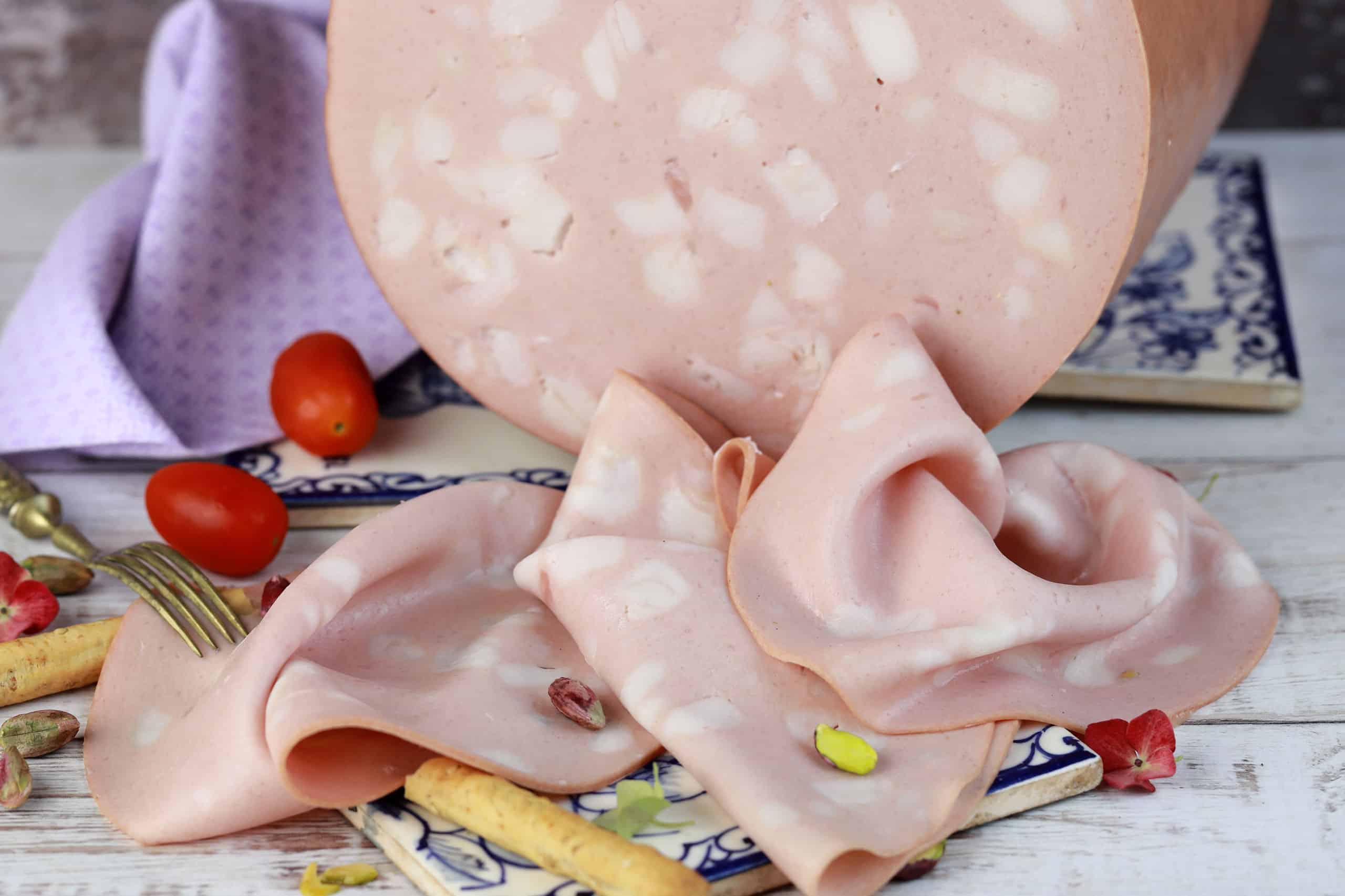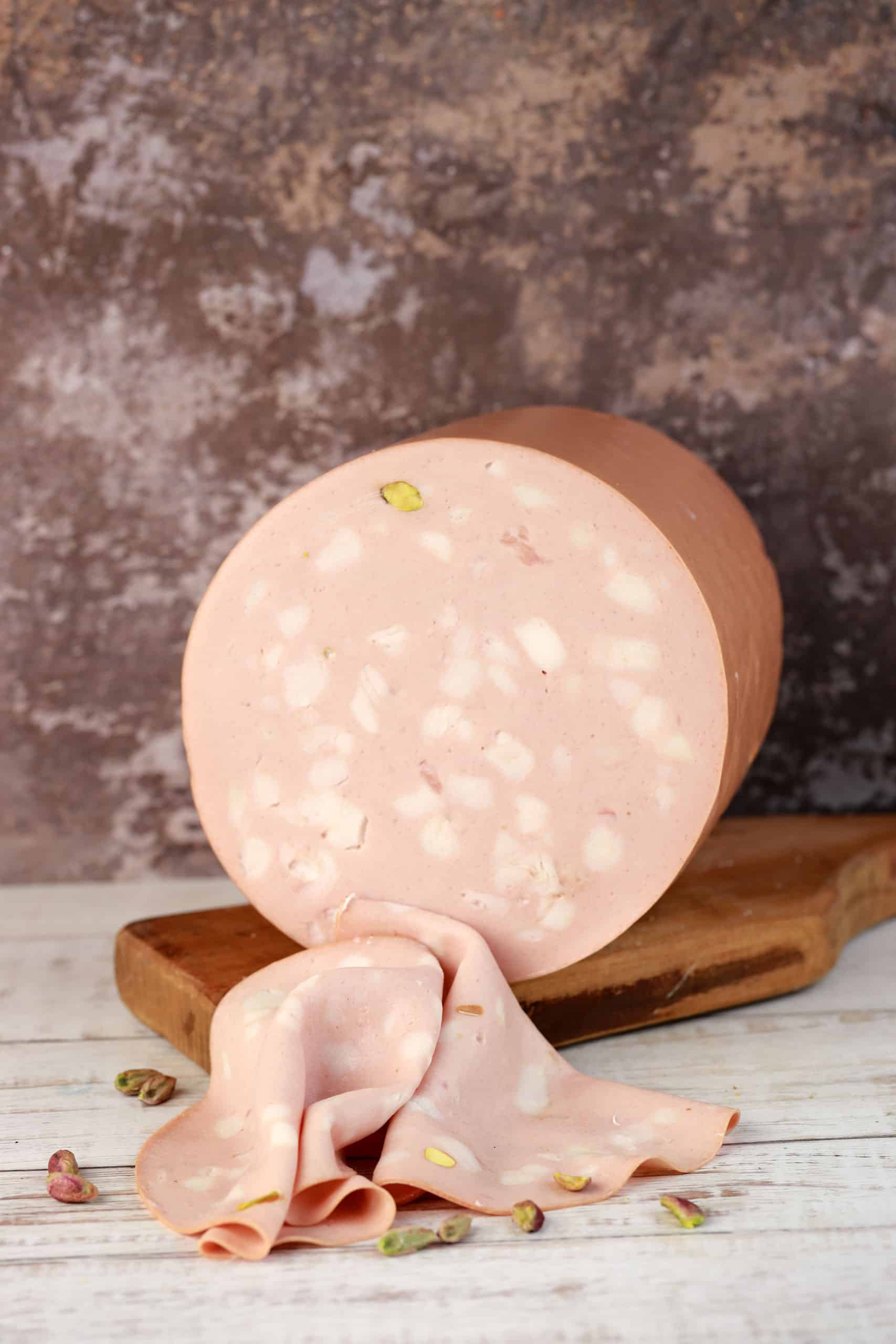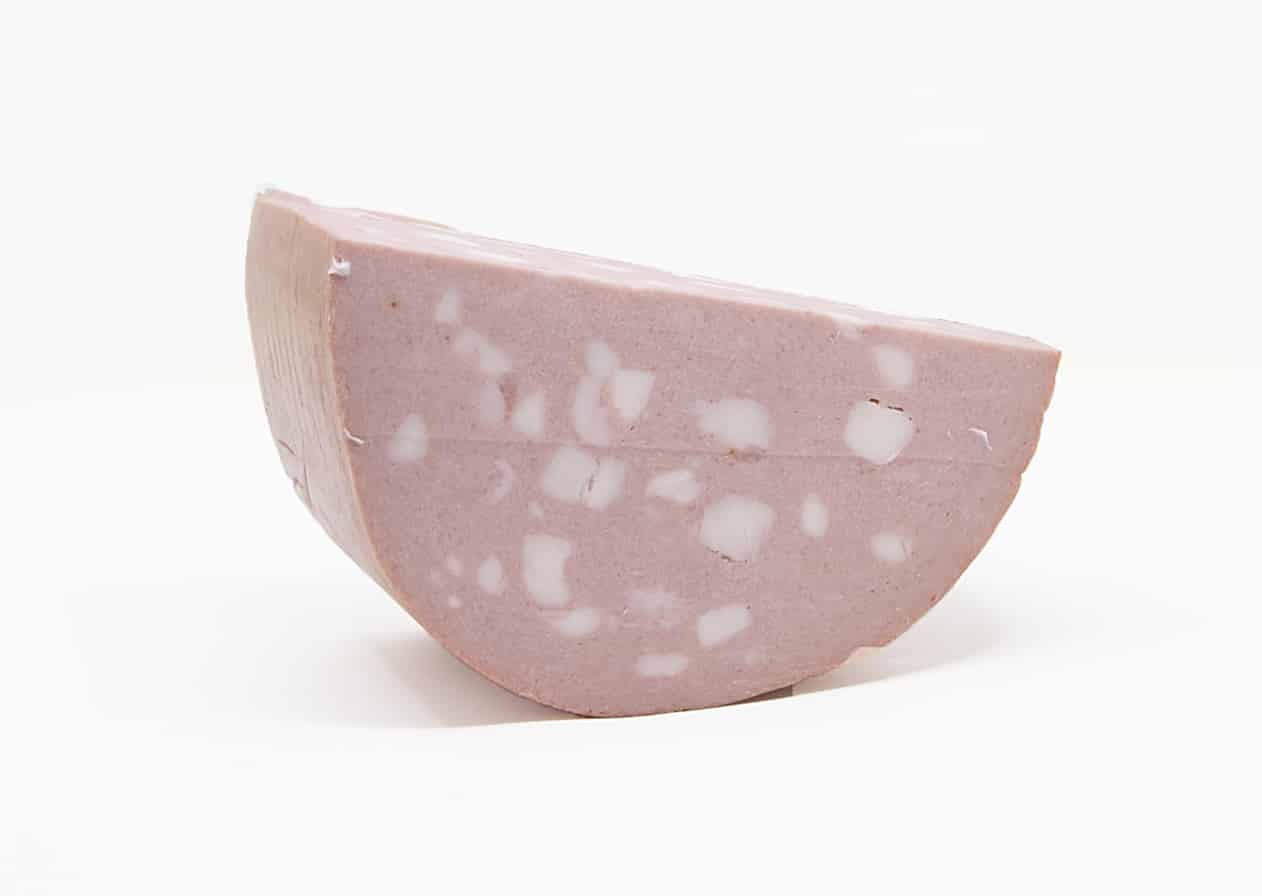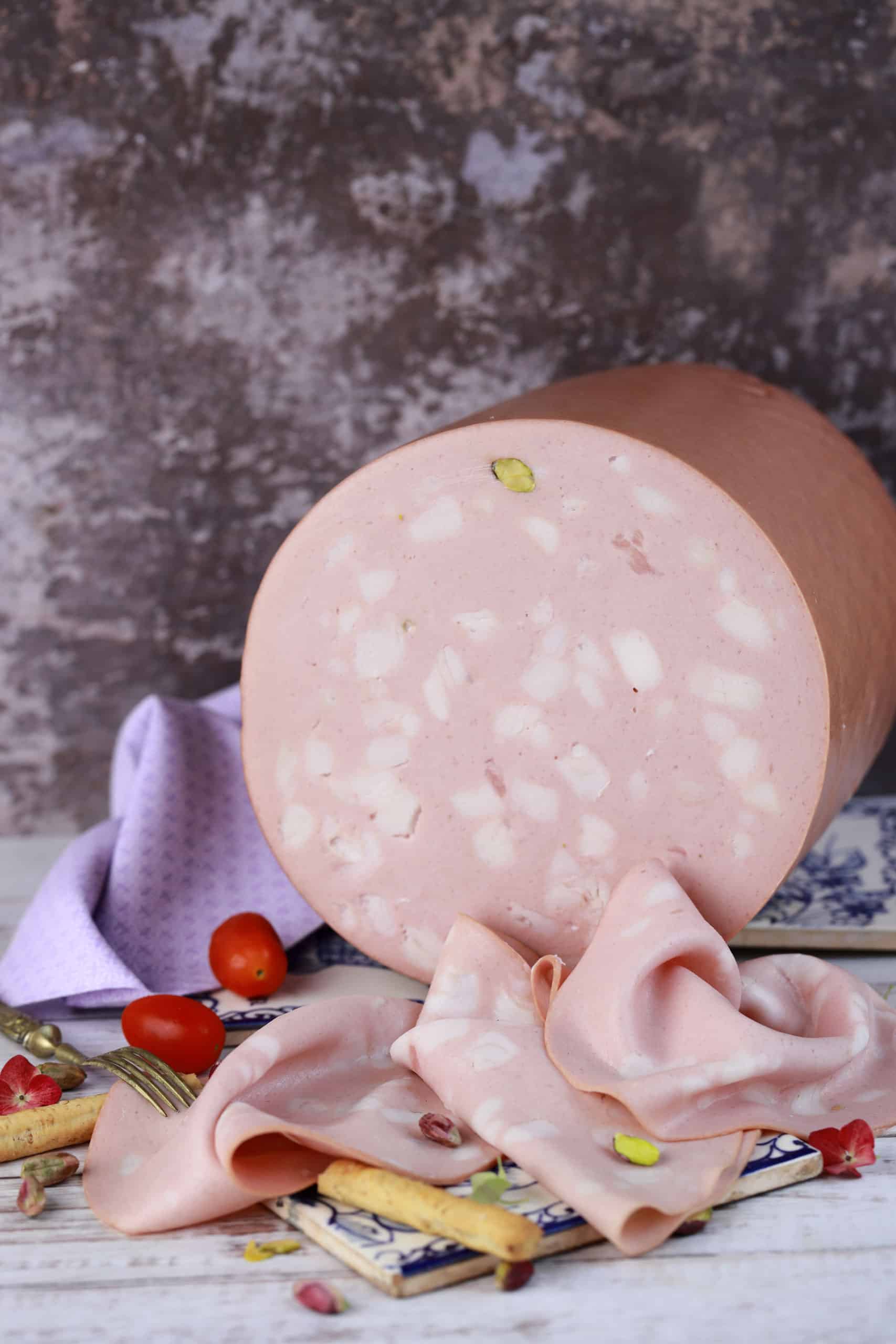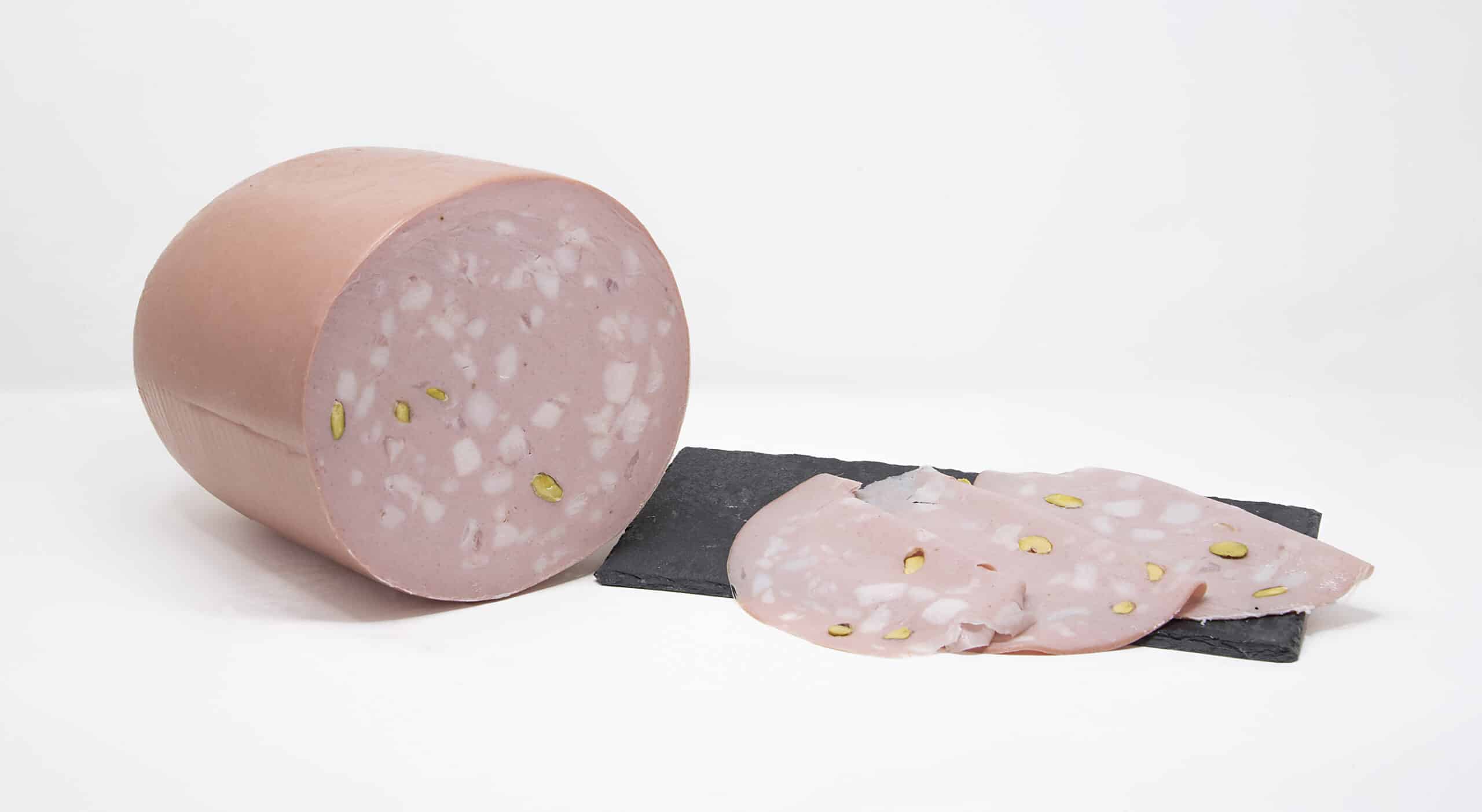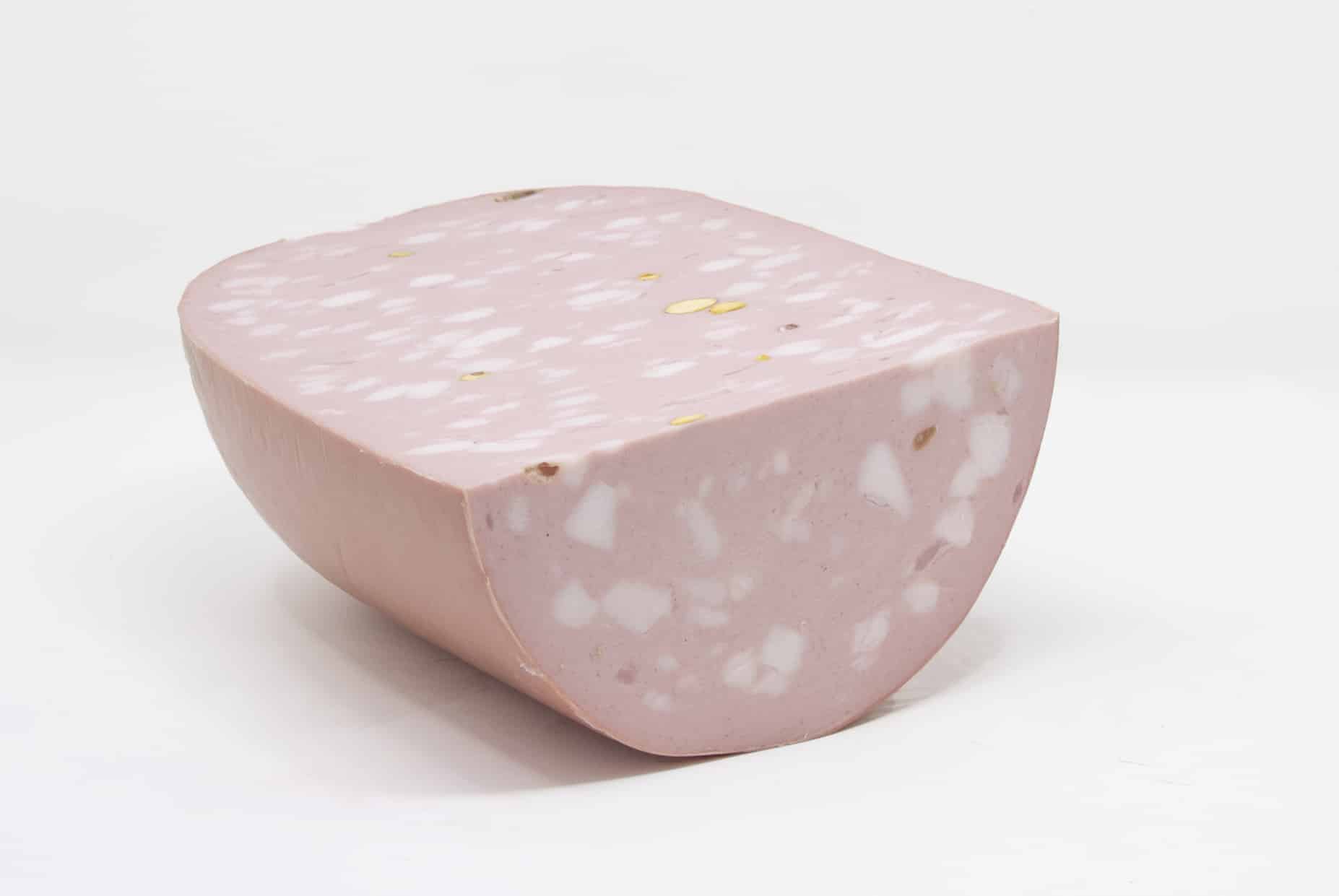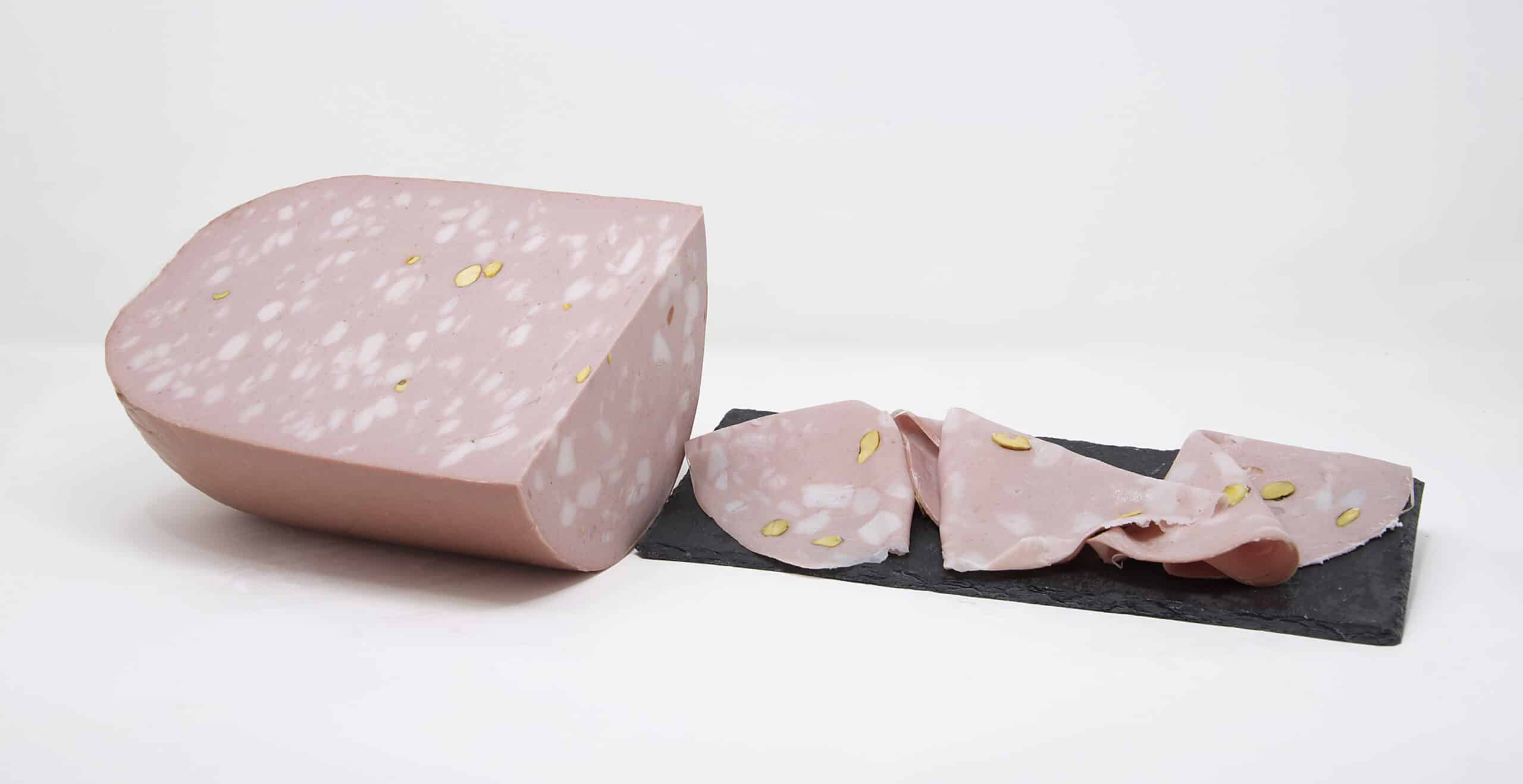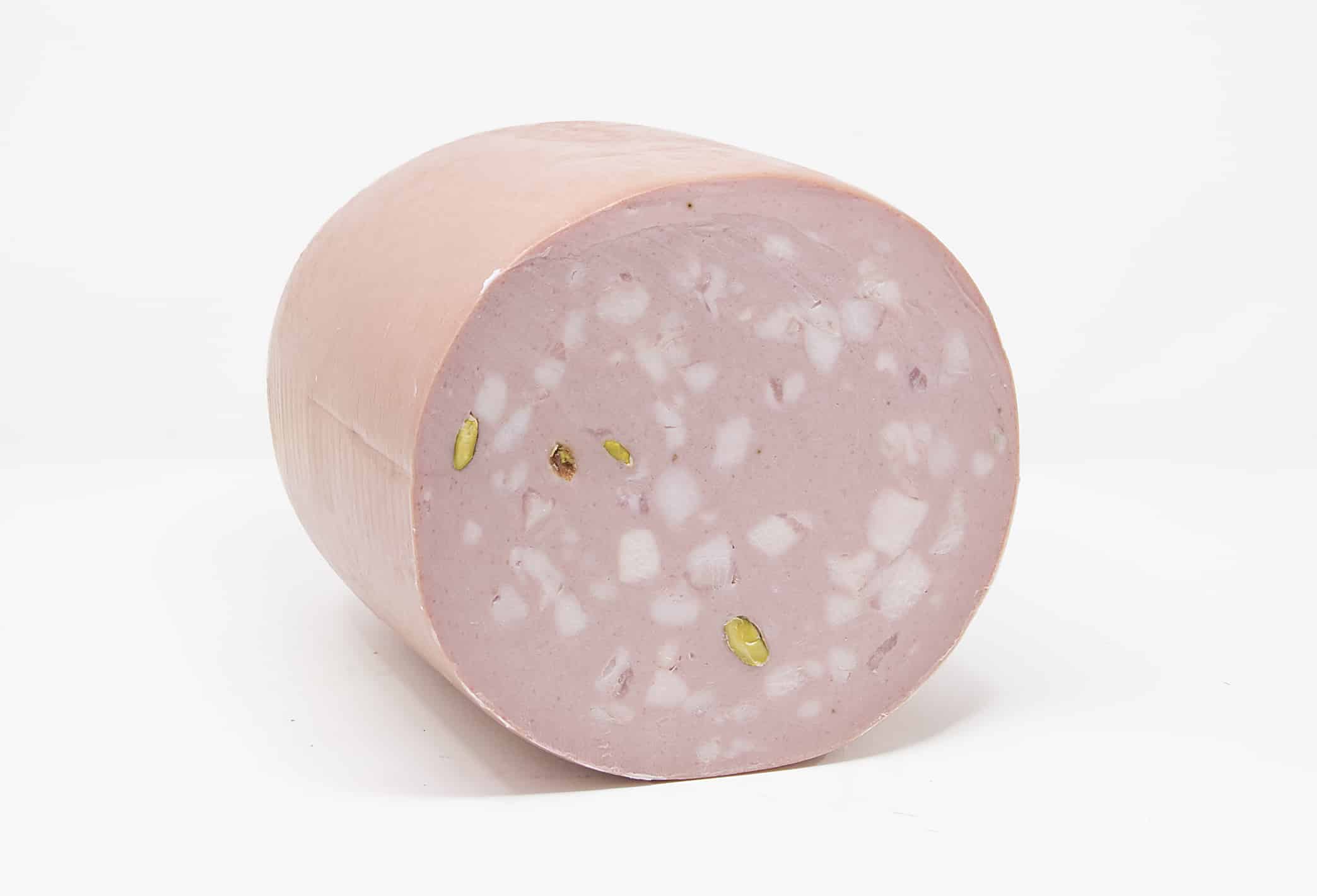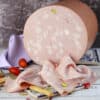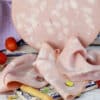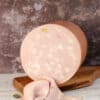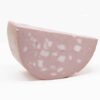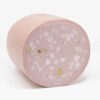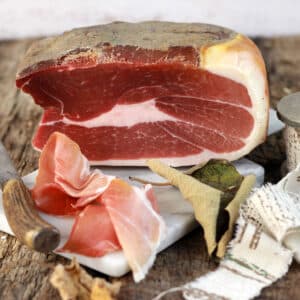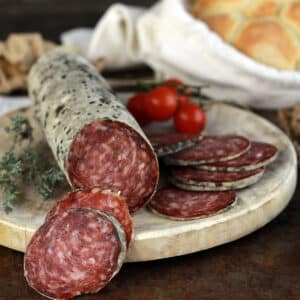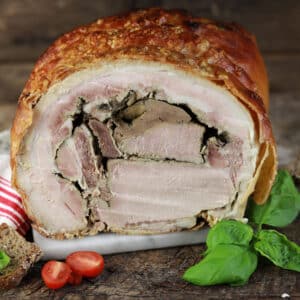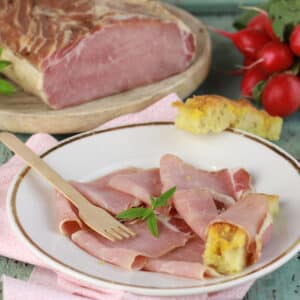In the ranking of the most favorite sausages by Italians of all ages, Mortadella with Pistachios can easily aspire to win one of the three highest steps on the podium.
It is made starting only from selected cuts of the pig (such as shoulder and throat) which are finely chopped and to which are added the unmistakable lard nuggets, a precious blend of aromas and spices, and of course, the delicious pistachios, suitably shelled and deprived of the film that covers them.
Once ready, the mortadella has an intense pink color, in which the green of the pistachios and the white of the lard nuggets stand out.
With a soft but compact texture at the same time, it is characterized by an immediately recognizable delicate aroma on the palate, which leaves a prolonged persistence on the palate.
It is a product suitable for nutrition even for those people suffering from celiac disease or food intolerances to gluten. It does not contain polyphosphates, flavor enhancers such as monosodium glutamate, milk derivatives such as lactose and dyes.
Mortadella with pistachios: processing
Mortadella with Pistachios, like all quality mortadellas, is also prepared starting from a careful selection of the parts of the pig that will be used to make the mince, including the parts of the shoulder, the throat and some trimmings of the hams. The secret of its fleshy but at the same time soft and caressing texture on the palate is due to the fact that the mince is extremely fine, almost a creamy emulsion, obtained by passing the dough through three different mincers with increasingly reduced grain.
The characteristic fragrant flavor is also given by the cubes of cooked lard, the mix of spices and salt and, of course, the Bronte pistachios which contribute to the addition of fresh and aromatic notes.
The cooking, after the dough has been stuffed into the natural casing, takes place by stewing: that is, each mortadella is placed inside special ovens that release very hot dry air. The time spent inside these environments will vary depending on the size of the sausage. The greater its weight and therefore the volume, the longer it will take to cook. It is understood that the salami is ready when the temperature inside has reached 70 degrees centigrade.
Once the mortadellas are cooked, they are rinsed under a jet of fresh water and left to rest until their internal temperature has dropped from 70 to 10 degrees. Only then are they ready for consumption and therefore for marketing. At the most, the whole process that leads to the making of a mortadella lasts four days.
Mortadella with Pistachios: origin, name and some curiosities
Like many other traditional Italian cured meats and sausages, mortadella and in particular, Mortadella with Pistachios, has a very controversial origin that is lost in the mists of time. Not only that, but the name also seems to have a somewhat debated genesis.
Regarding its origin, some even trace it back to the time of the Roman Empire. In fact, it is believed that the antecedent of our mortadella today is the farcimen myrtatum, which is a cured meat already known and appreciated by the Romans, mentioned even by Pliny the Elder (23-79 AD), and Varro (116 – 27 BC). Based on this theory, the name “mortadella” would also derive from myrtatum, a Latin term that indicates myrtle, an aroma used to produce sausage and which replaced the more precious pepper.
Others, on the other hand, want the etymology of the word mortadella to descend not so much from myrtatum (myrtle) as from the mortarium, or the mortar in which the pork stuffing (farcimen) was pounded and blended before being boiled.
If there is no univocity on the origin of the name, there is certainly agreement on the geographical location of the original production: Bologna, for the ancient Romans Bononia, and its surrounding area. To confirm this, the oldest testimony of a manufacturer of farcimen myrtatum or farcimen murtatum is preserved at the Archaeological Civic Museum of the city (depending on the emphasis on the aroma of the myrtle used to flavor the mince, or on the fact that the stuffing was just pounded). It is a funeral tablet representing the producer intent on preparing the mortadella of the time with seven small pigs, a mortar and a pestle.
Until the Middle Ages, the recipe for the farcimen was kept secret by the Salaroli art. The first written recipe is only in 1667 when Vincenzo Tanara provides precise information on the procedures for making it and the quantities of fat to be used.
For others, however, the father of mortadella is a century earlier than Tanara. It is in fact Cristoforo di Messisbugo, a famous chef from the Este house and author of one of the first gastronomy treatises ever written. In his “New book in which he teaches how to make every kind of food” published in 1557, there is also a description of all the different stages of processing and preparation of mortadella, and the list of ingredients that were to be used.
Ingredients
Pork, pork fat, pork tripe, salt, spices, flavorings, antioxidant: E301, preservative: E250.
Produced in a factory where dairy products and gluten-containing ingredients are not used.
It may contain traces of walnuts.
Salumificio Artigianale Gombitelli di Triglia M. & T. s.n.c. Via dei norcini, 4719/4725 Gombitelli – 55041 Camaiore (LU)
Keep in the fridge at +0/+5 °C.
EU ORIGIN
| VALORI NUTRIZIONALI medi per 100 g. di prodotto | |
| Valore energetico | KJ 1283 – Kcal 310 |
| Grassi | g 28.00 |
| di cui saturi | g 10.30 |
| Carboidrati | g 0.5 |
| di cui zuccheri | g 0.5 |
| Proteine | g 14.00 |
| Sale | g 2.0 |

